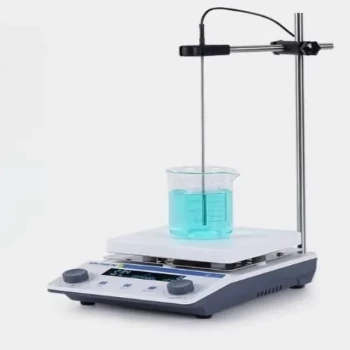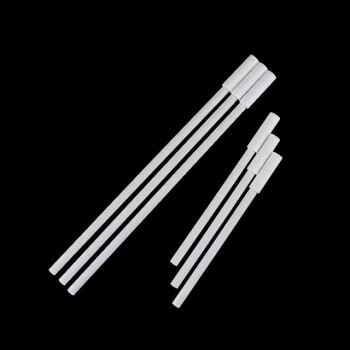Reattori ad alta pressione
Applicazioni
I reattori ad alta pressione sono strumenti indispensabili nel campo della ricerca chimica, soprattutto quando si tratta di condizioni estreme. Questi reattori specializzati sono progettati meticolosamente per resistere e facilitare le reazioni chimiche ad alta temperatura e ad alta pressione, rendendoli ideali per la manipolazione di materiali che presentano rischi significativi.
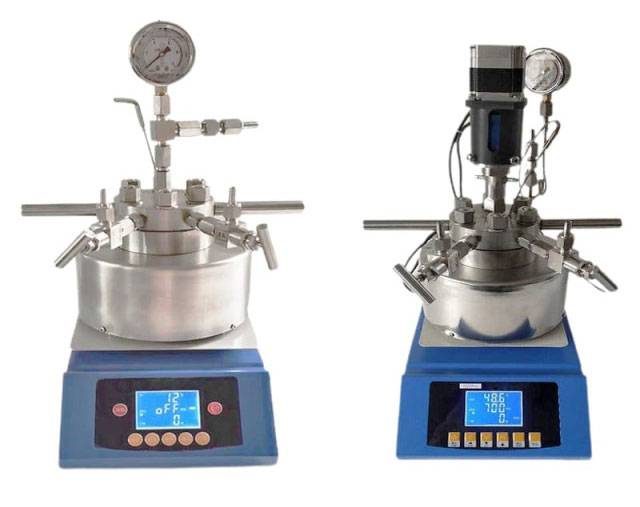
In particolare, i reattori ad alta pressione sono fondamentali per gli esperimenti che coinvolgono sostanze infiammabili, esplosive e tossiche. La loro struttura robusta garantisce sicurezza ed efficienza, consentendo ai ricercatori di manipolare queste sostanze pericolose senza compromettere l'integrità della sperimentazione. Questa capacità è particolarmente preziosa in settori come quello petrolchimico, farmaceutico e dei prodotti chimici speciali, dove la necessità di un controllo preciso delle condizioni di reazione è fondamentale.
Inoltre, la versatilità dei reattori ad alta pressione va oltre la sicurezza. Sono in grado di gestire una vasta gamma di processi chimici, dai più semplici ai più complessi, consentendo un ampio spettro di applicazioni. Che si tratti di sintetizzare nuovi composti, ottimizzare i percorsi di reazione o studiare la cinetica di reazione, i reattori ad alta pressione forniscono l'ambiente necessario per ottenere i risultati desiderati.
In sintesi, i reattori ad alta pressione non sono solo strumenti, ma componenti essenziali per il progresso della ricerca chimica e dei processi industriali, in grado di offrire sicurezza e funzionalità anche negli ambienti più difficili.
Reattori in vetro
Funzionalità
I reattori in vetro sono progettati con una struttura in vetro a doppio strato, fondamentale per gestire una varietà di materiali di reazione. Questo design unico consente un funzionamento versatile, compreso l'agitazione in condizioni di pressione normale e negativa. Il vetro a doppio strato non solo garantisce la trasparenza per il monitoraggio delle reazioni, ma assicura anche un ambiente stabile, facilitando il controllo costante della temperatura. Ciò è possibile grazie all'integrazione di sistemi di riscaldamento e raffreddamento, in grado di mantenere una precisa regolazione della temperatura durante l'intero processo di reazione.

Oltre al controllo della temperatura, la struttura in vetro a doppio strato offre maggiori caratteristiche di sicurezza. Lo strato esterno di vetro funge da barriera protettiva, riducendo il rischio di esposizione accidentale a materiali pericolosi. Questo design è particolarmente vantaggioso quando si ha a che fare con composti sensibili o volatili, in quanto riduce al minimo il potenziale di perdite e fuoriuscite.
La funzionalità dei reattori in vetro va oltre l'agitazione di base e il controllo della temperatura. Sono anche dotati di caratteristiche avanzate, come la regolazione automatica della pressione e i sistemi di controllo programmabili. Queste caratteristiche consentono ai ricercatori di condurre reazioni complesse con elevata precisione e riproducibilità, rendendo i reattori in vetro uno strumento indispensabile nei laboratori moderni.
Reattori magnetici
Meccanismo di tenuta
I reattori magnetici utilizzano una sofisticata struttura di tenuta statica che integra un accoppiatore magnetico. Questo design è fondamentale per attenuare i problemi di tenuta, garantendo così un ambiente di lavoro completamente sigillato. L'accoppiatore magnetico agisce come un dispositivo di trasmissione senza contatto, facilitando il trasferimento di coppia e movimento senza contatto fisico diretto. Questa caratteristica è particolarmente vantaggiosa nella manipolazione di materiali pericolosi, dove anche minime perdite possono compromettere l'integrità e la sicurezza della sperimentazione.
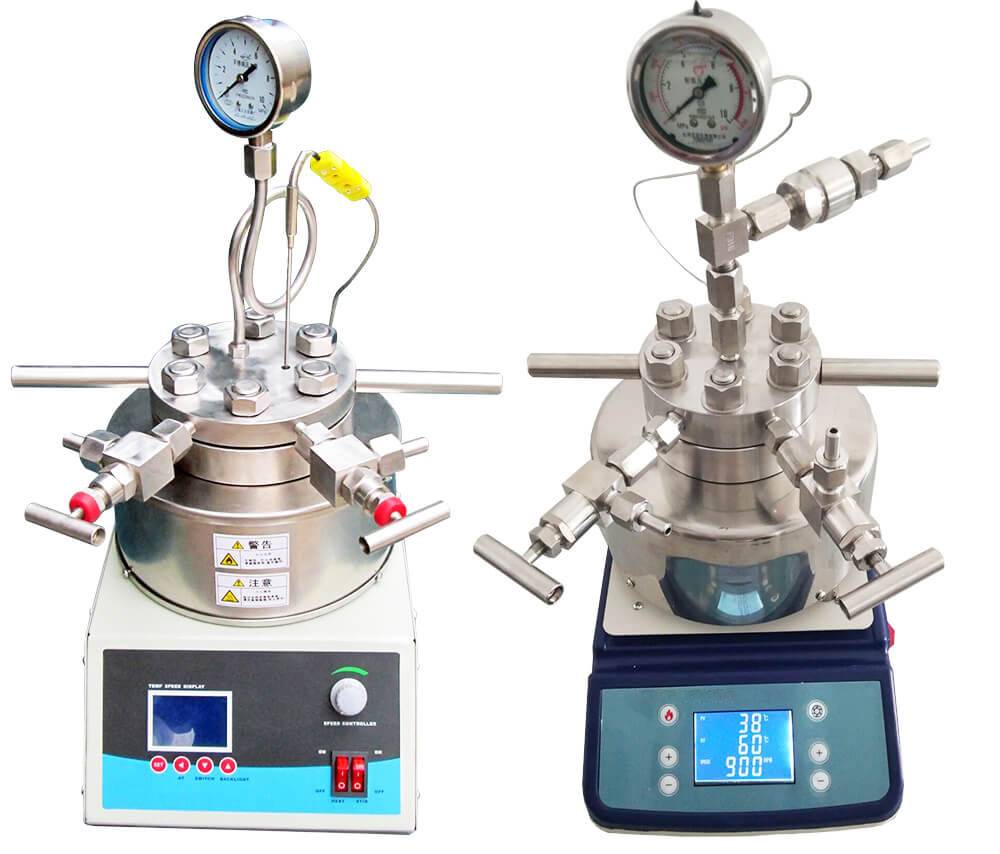
Il meccanismo di tenuta statica funziona secondo il principio dei campi magnetici, che interagiscono con i componenti interni del reattore per consentire un funzionamento regolare senza la necessità di guarnizioni meccaniche. Questo approccio non solo aumenta la durata del reattore, ma semplifica anche le procedure di manutenzione. Eliminando la necessità di sostituire frequentemente le guarnizioni, si riduce il costo operativo complessivo, rendendo i reattori magnetici una scelta economicamente vantaggiosa per i laboratori.
Inoltre, la sigillatura completa garantisce che l'ambiente di reazione rimanga incontaminato, privo di contaminanti esterni che potrebbero alterare i risultati della reazione. Questo livello di controllo ambientale è fondamentale per gli esperimenti che richiedono condizioni precise, come quelli che coinvolgono mezzi tossici o esplosivi. L'efficienza dell'accoppiatore magnetico nel mantenere un ambiente sigillato sottolinea l'idoneità del reattore per attività di ricerca e sviluppo ad alto rischio.
Sintetizzatori a microonde
Reazioni catalitiche
I sintetizzatori a microonde sono fondamentali per catalizzare un'ampia gamma di reazioni in vari settori, tra cui la chimica organica, la farmaceutica e la biochimica. Questi sintetizzatori sfruttano le proprietà uniche delle microonde per aumentare la velocità e la resa delle reazioni, rendendoli strumenti indispensabili nei laboratori moderni.
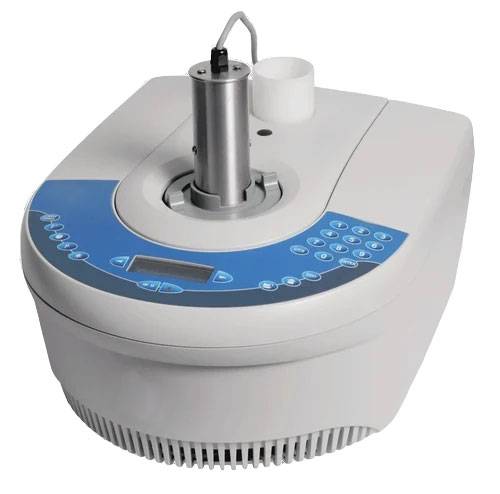
Uno dei vantaggi principali dei sintetizzatori a microonde è la loro capacità di facilitare reazioni organiche complesse. Queste reazioni richiedono spesso un controllo preciso della temperatura e della pressione, condizioni che le microonde possono fornire in modo efficiente. Per esempio, la sintesi di prodotti farmaceutici spesso comporta trasformazioni molecolari complesse che beneficiano del riscaldamento rapido e uniforme fornito dalle microonde.
Nel campo della biochimica, i sintetizzatori a microonde vengono impiegati per catalizzare reazioni che coinvolgono biomolecole. Queste reazioni possono essere particolarmente impegnative a causa della sensibilità dei materiali biologici al calore e ad altri fattori ambientali. Il riscaldamento controllato e i tempi di reazione rapidi offerti dalle microonde aiutano a minimizzare la degradazione e a massimizzare la purezza del prodotto.
Oltre alle reazioni chimiche, i sintetizzatori a microonde svolgono un ruolo cruciale anche nei processi fisici come l'estrazione con solventi. Questa tecnica è ampiamente utilizzata per l'estrazione di composti preziosi da miscele complesse, un processo che può essere notevolmente accelerato e ottimizzato utilizzando l'energia delle microonde.
In sintesi, i sintetizzatori a microonde sono strumenti versatili che estendono le loro capacità catalitiche a uno spettro di discipline scientifiche, migliorando l'efficienza e l'efficacia della ricerca e dello sviluppo in laboratorio.
Calorimetri di reazione
Misure
I calorimetri di reazione sono strumenti indispensabili in laboratorio, progettati per misurare il calore rilasciato o assorbito durante le reazioni chimiche o i processi fisici. Questa misurazione è fondamentale per acquisire conoscenze nel campo della termochimica e della cinetica, essenziali per comprendere le variazioni di energia e i tassi di reazione coinvolti in vari processi.
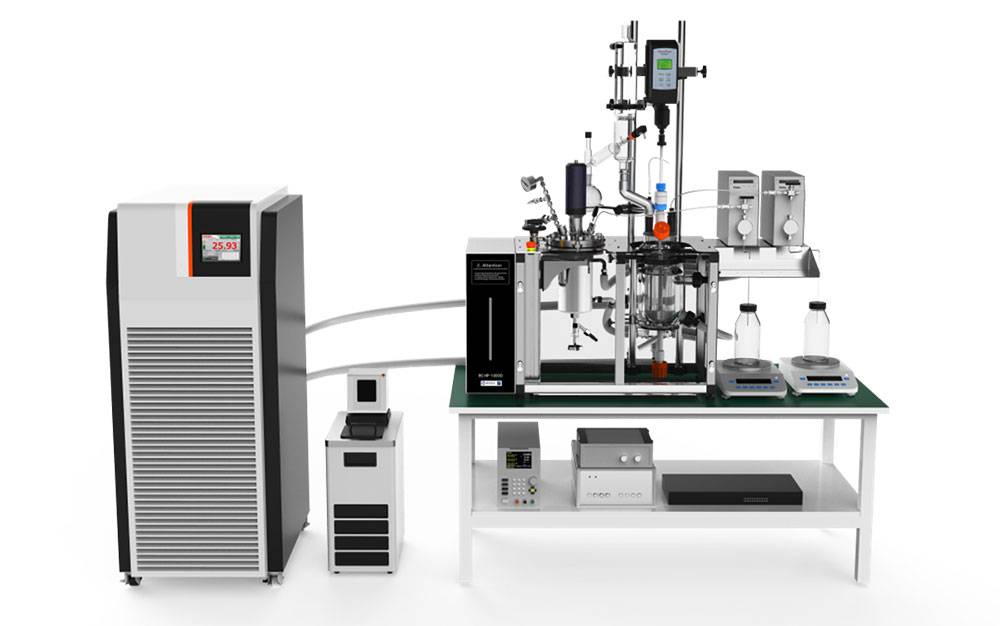
I dati raccolti dai calorimetri di reazione possono essere utilizzati per analizzare le proprietà termodinamiche delle reazioni, come le variazioni di entalpia e di entropia, fondamentali per prevedere i risultati delle reazioni e ottimizzare le condizioni di reazione. Inoltre, i parametri cinetici derivati da queste misurazioni, come l'energia di attivazione e l'ordine di reazione, forniscono informazioni preziose per il controllo del processo e lo scale-up.
| Parametro di misura | Approfondimento termochimico | Approfondimento cinetico |
|---|---|---|
| Rilascio di calore/assorbimento | Variazione di entalpia | Velocità di reazione |
| Variazione di temperatura | Variazione dell'entropia | Energia di attivazione |
Monitorando il flusso di calore, i ricercatori possono anche identificare potenziali pericoli, come le reazioni esotermiche che potrebbero portare a reazioni di fuga o al surriscaldamento, garantendo così pratiche di laboratorio più sicure. L'integrazione dei dati calorimetrici con altre tecniche analitiche migliora la comprensione complessiva dei sistemi di reazione complessi, rendendo i calorimetri di reazione una componente essenziale della ricerca e dello sviluppo chimico moderno.
Dispositivi di valutazione dei catalizzatori
Principi di valutazione
I dispositivi di valutazione dei catalizzatori simulano le condizioni di reazione reali per valutare l'efficienza dei catalizzatori. Questa valutazione si basa principalmente su parametri derivati dai prodotti di reazione, che vengono analizzati meticolosamente per misurare l'efficacia del catalizzatore. Questi metodi di valutazione si dividono in due tipi: statici e dinamici.
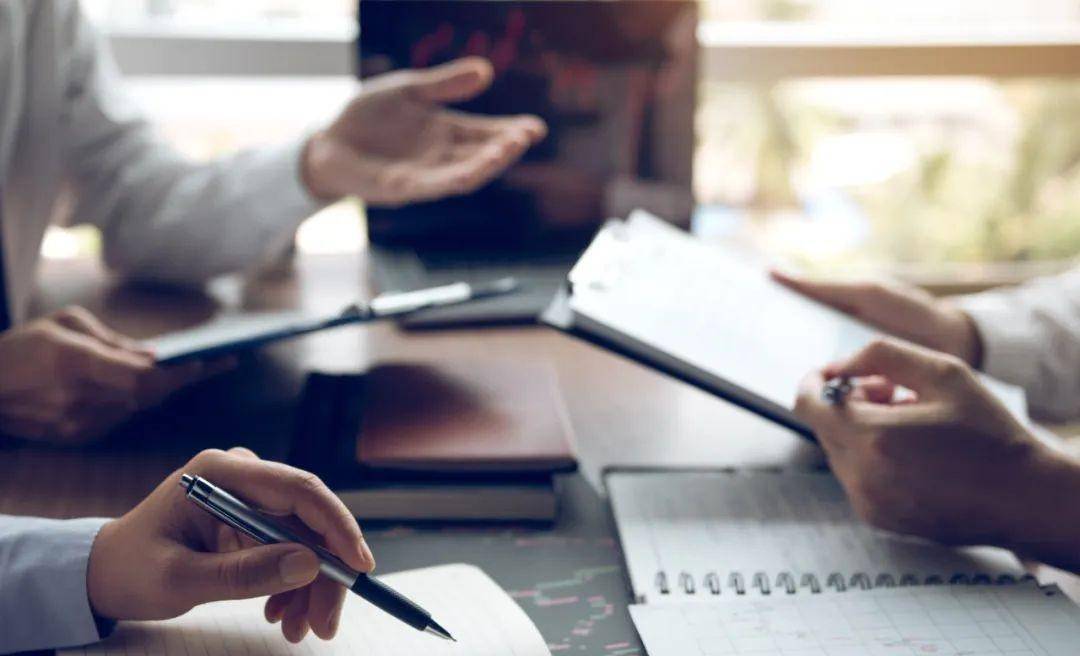
Valutazione statica prevede la creazione di un ambiente controllato in cui le condizioni di reazione rimangono costanti per tutta la durata dell'esperimento. Questo metodo è particolarmente utile per studiare l'attività iniziale e la selettività dei catalizzatori in condizioni stabili. I parametri chiave come la temperatura, la pressione e le concentrazioni dei reagenti sono fissi, consentendo un'analisi dettagliata delle prestazioni del catalizzatore senza l'interferenza di variabili fluttuanti.
Valutazione dinamica La valutazione dinamica, invece, riproduce ambienti industriali più realistici, in cui le condizioni di reazione sono soggette a variazioni. Questo approccio valuta la capacità di un catalizzatore di mantenere la propria efficienza in condizioni variabili, come la fluttuazione delle temperature o la variazione delle concentrazioni dei reagenti. La valutazione dinamica è fondamentale per prevedere le prestazioni e la stabilità a lungo termine dei catalizzatori nei processi continui, fornendo spunti che la sola valutazione statica non può offrire.
| Tipo di valutazione | Caratteristiche principali | Applicazione |
|---|---|---|
| Statica | Condizioni controllate e costanti | Studi di attività iniziale e selettività |
| Dinamico | Condizioni variabili | Prestazioni e stabilità a lungo termine in processi continui |
I metodi di valutazione sia statici che dinamici sono essenziali per una valutazione completa dell'efficienza del catalizzatore, assicurando che il catalizzatore scelto sia ottimizzato per le specifiche condizioni di reazione che incontrerà nelle applicazioni pratiche.
Postazioni di lavoro per la sintesi
Automazione
I reattori di sintesi completamente automatizzati, controllati da sistemi informatici avanzati, stanno rivoluzionando il campo della ricerca sui composti e sui farmaci. Queste macchine sofisticate gestiscono con precisione ed efficienza una miriade di processi, tra cui alimentazione, riscaldamento, agitazione e distillazione. L'automazione non solo migliora la riproducibilità e l'accuratezza degli esperimenti, ma riduce anche il rischio di errore umano, che è particolarmente cruciale in ambienti di ricerca delicati e ad alto rischio.

Uno dei vantaggi principali di questi sistemi automatizzati è la capacità di gestire sequenze complesse di operazioni senza intervento manuale. Questa capacità è particolarmente vantaggiosa nella sintesi di composti intricati, dove la minima deviazione può portare a variazioni significative nel prodotto finale. I sistemi controllati dal computer assicurano che ogni fase venga eseguita con gli esatti parametri predefiniti dai ricercatori, mantenendo così la coerenza tra più cicli.
Inoltre, l'automazione consente un funzionamento continuo, che può accelerare notevolmente il processo di ricerca. I ricercatori possono impostare gli esperimenti in modo che vengano eseguiti durante la notte o nei fine settimana, massimizzando l'uso del tempo di laboratorio. Il funzionamento continuo è facilitato dal design robusto dei reattori, costruiti per resistere a lunghi periodi di utilizzo senza compromettere le prestazioni.
Oltre ai vantaggi operativi, i reattori di sintesi automatizzati contribuiscono anche alla sicurezza del laboratorio. Gestendo processi pericolosi come il riscaldamento e la distillazione, questi sistemi riducono al minimo l'esposizione dei ricercatori a sostanze chimiche e condizioni potenzialmente pericolose. Questo non solo protegge la salute e la sicurezza del team di ricerca, ma garantisce anche la conformità alle severe norme di sicurezza del laboratorio.
L'integrazione del controllo computerizzato consente anche il monitoraggio in tempo reale e la registrazione dei dati, fornendo ai ricercatori preziose informazioni sulla dinamica della reazione. Questi dati possono essere utilizzati per ottimizzare le condizioni di reazione, identificare le inefficienze e perfezionare il processo di sintesi. La capacità di analizzare e regolare in tempo reale è un progresso significativo che può portare a risultati di ricerca più efficienti ed efficaci.
In sintesi, l'avvento dei reattori di sintesi completamente automatizzati rappresenta un cambiamento fondamentale nel modo in cui viene condotta la ricerca sui composti e sui farmaci. Sfruttando la precisione controllata dal computer, questi sistemi migliorano la riproducibilità, accelerano i tempi della ricerca, migliorano la sicurezza e forniscono dati preziosi per l'ottimizzazione del processo. Con la continua evoluzione della tecnologia, il suo impatto sul campo della sintesi chimica è destinato a crescere, aprendo la strada a nuove scoperte e innovazioni.
Prodotti correlati
- Reattore Autoclave di Laboratorio ad Alta Pressione in Acciaio Inossidabile
- Mini reattore autoclave ad alta pressione in SS per uso di laboratorio
- Reattori personalizzabili ad alta pressione per applicazioni scientifiche e industriali avanzate
- Reattore Autoclave da Laboratorio ad Alta Pressione per Sintesi Idrotermale
- Agitatore magnetico riscaldato a temperatura costante per piccoli laboratori e agitatore
Articoli correlati
- Serbatoi rivestiti da laboratorio
- Sicurezza in laboratorio: Apparecchiature e reattori ad alta pressione
- Migliorare la sicurezza in laboratorio: Una guida completa alla sicurezza dei reattori a pressione
- Sicurezza in laboratorio: Uso sicuro delle apparecchiature ad alta tensione
- Forno tubolare ad alta pressione: applicazioni, sicurezza e manutenzione





